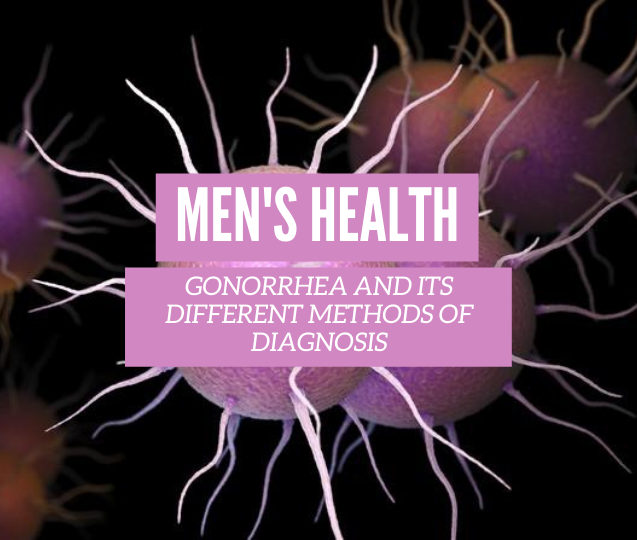There are several ways to confirm if you’re infected with gonorrhea. Apart from clinical diagnostic confirmation testing, you can do a self-check. See how.
Should you have been exposed to gonorrhea, seeing a doctor is pertinent. A sample of your urine or a swab of the infected area (for instance, throat, urethra, or vagina) will be taken for diagnostic confirmation using bacterial culture, genetic test, or gram staining. You don’t want to visit a GP and like to self-test? There are at-home testing kits.
People with gonorrhea are often asymptomatic (have no symptoms), but even if you’re healthy, testing for this STD and others will be helpful.
Laboratory testing
Three test types with their perks and drawbacks can be used to diagnose gonorrhea. Newest among the first two: Gram staining and Bacterial culture, is the Nucleic acid amplification test (NAAT). This test detects the bacteria in the genes.
Nucleic amplification test (NAAT)
Developed in 1993, this genetic test is known for speed and accuracy, which is why it’s recommended for diagnosing urinary and genital gonorrhea. Using a urine sample or swab from possible infected areas like the vagina, etc., this test will obtain strands of bacterial DNA and duplicate them into over a billion copies via a process called thermocycling.
In simple terms, NAAT doesn’t identify the bacteria but the genes specific to N. gonorrhea.
Highly accurate results are obtained here in few hours and available in 2 to 3 days. The CDC recommends the NAAT for the detection of gonorrhea in the throat and rectum. Visit your sexual health clinic to get tested.
Bacterial culture
An effective diagnostic test for gonorrhea of the throat, rectum, eyes, or genitals. This involves taking a swab and adding it to a substance that triggers the growth of the bacteria. The test is positive when growth occurs and negative when it doesn’t.
Bacteria resistance to any antibiotics can be checked with this test.
An improper collection of swabs can rule out clear proof of infection via a culture test. Both mucosal cells and infectious discharge should be collected in a swab!
This test is sensitive to temperature. Accuracy of result drops with errors in sample handling, storage incubation, or processing. Results in general, are available within 5 to 7 days.
Gram staining
Here, a fine dye is used to stain bacteria walls to sort out and isolate them microscopically. For the diagnosis of gonorrhea in men, this test is effective. It’s performed using a urethral swab or a “first catch” sample of urine. By first catch, we mean a sample of the first 20 to 30mm taken from urine withheld for an hour.
The sensitivity of gram staining is low, so a result that’s negative in men without symptoms won’t be definitive. This requires further testing. Results from this test usually come within 2 to 3 days.
Differential diagnoses
There are similar symptoms gonorrhea may share with other infections, which may only be known by a doctor. To you, a whitish penile discharge may signify gonorrhea but could be caused by:
- Urinary tract infection (UTI)
- Vaginitis
- Herpes simply urethritis
- Internal hemorrhoids
- Bacterial vaginosis
- Orchitis
- Bacterial conjunctivitis
- Epididymitis
- Mucopurulent cervicitis
At-home tests
Gonorrhea may or may not present symptoms. Even if it does, it may not mean it’s gonorrhea; it could be other infections. Think you’ve been exposed? Go get screened to be sure. Not everyone can attend a clinic test. People feel embarrassed, stigmatized, or are afraid their results will be made public, so they avoid clinical diagnosis.
Following this, the use of at-home test kits has been endorsed. You can privately collect your urine sample or swab and mail it to a lab for testing. The result can be obtained from a secure website within 3 to 5 working days. There are disadvantages to this test method, including user error and false-negative results.
What happens if you test positive?
Should you test positive for gonorrhea, go for a comprehensive STD screening to check for the presence of other STIs like syphilis, HIV, chlamydia, etc. This is because they co-exist. Kindly contact your past and present sexual partners to get screened and treated as you do yours.
Follow-up test post-treatment isn’t required provided the infection is cleared, and you take antibiotics according. However, since reinfection is high these days, a 3-months re-test is required.
Recommendations for screening
Gonorrhea is one of the most common sexual infections. If you’re at increased risk, get tested.
Sexually active women at higher risk should get tested
Pregnant women at increased risk should be tested for gonorrhea and chlamydia, syphilis, hepatitis B, and HIV
Men and women at higher risk should be tested for HIV, hepatitis B, and syphilis
For all between the ages of 15 to 65, HIV screening should be part of the routine check-up
Those having unprotected sex and several sex partners, they are at risk of infection. To get more information about gonorrhea, getting tested, and the treatment, do reach out to us today.





